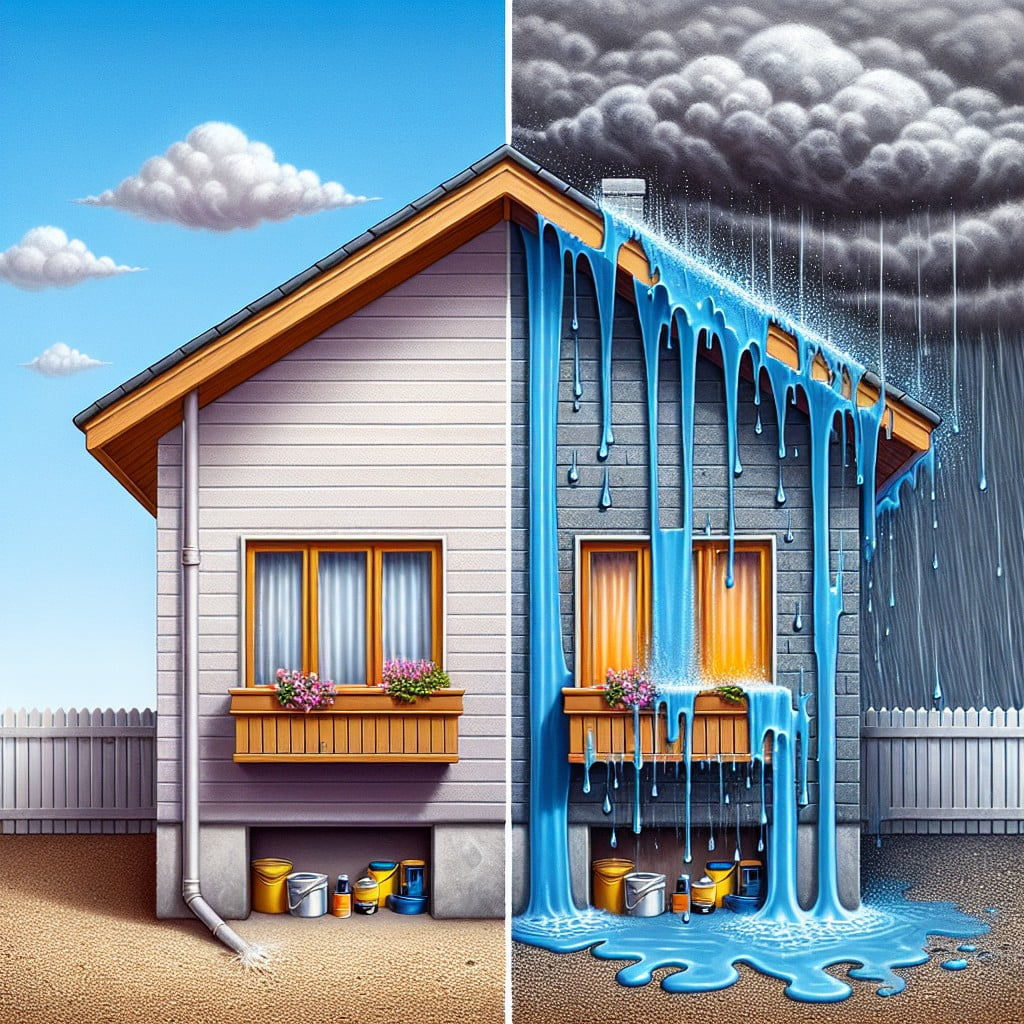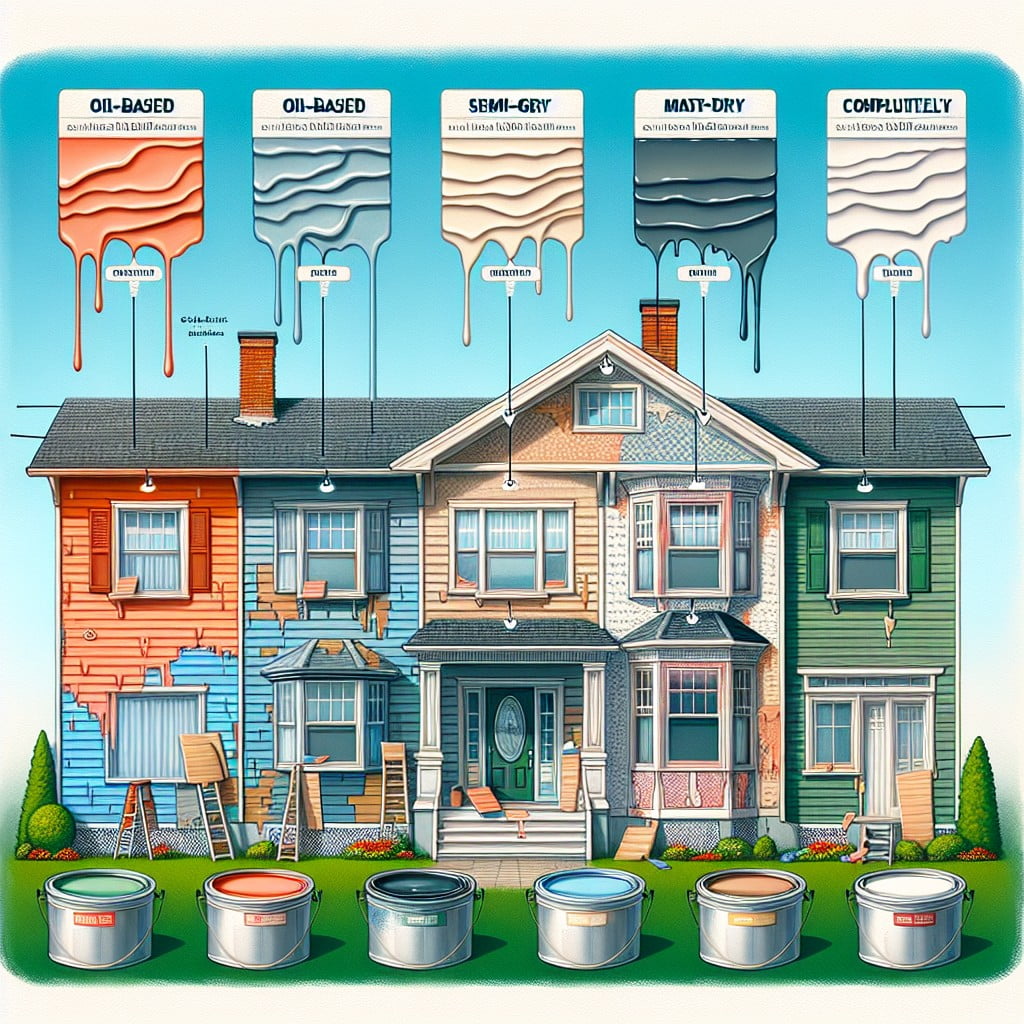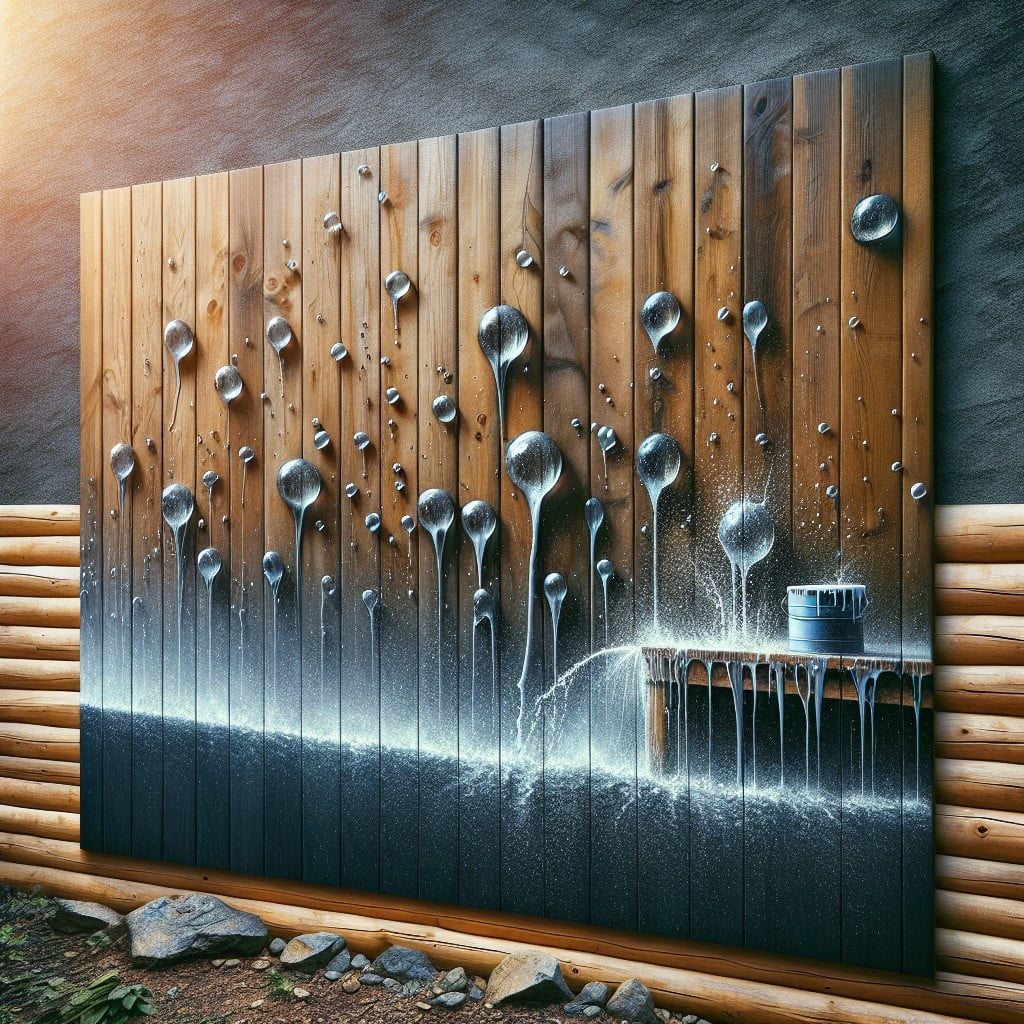Last updated on
Understanding how long exterior paint needs to dry before rain is critical because it ensures the longevity and effectiveness of your paint job.
Key takeaways:
- Exterior paint should dry for at least 6 hours before rain.
- Latex-based paint dries in about 1 hour, oil-based paints take longer.
- Temperature, humidity, wind, and paint thickness affect drying time.
- Paint should fully cure in 7-30 days for maximum durability.
- Sherwin Williams exterior paint needs 4 hours to dry before rain.
Exterior Paint: Dry Vs. Cured

Understanding the difference between dry and cured is essential when it comes to painting the exterior of a house. When paint dries, it means the solvents in the paint have evaporated, and it feels dry to the touch. However, curing is the complete process where paint reaches its maximum hardness and durability.
Dry times are generally shorter, allowing for light use and additional coats, while curing can take significantly longer, indicating that the paint has fully adhered and hardened. It’s important to remember that paint can be dry to the touch, but not yet fully cured, making it vulnerable to damage from rain and other elements.
How Long Does It Take for Exterior Paint to Dry? It Depends On the Type of Paint

Understanding the drying times for different types of paint is crucial for a successful exterior paint job. Latex-based paints are popular due to their quick-drying capabilities, usually becoming dry to the touch in about one hour. However, for them to be fully dry, a waiting period of up to four hours is recommended before a new coat is applied.
On the other hand, oil-based paints require patience. They might feel dry to the touch after six to eight hours, but they need more time than latex paints before applying another coat—usually 24 hours under ideal conditions.
Each of these time frames assumes ideal weather conditions. Still, it’s essential to check the manufacturer’s label for specific drying times, as formulations can vary, and some brands might offer fast-drying or extended-drying-time products.
Latex Based Paint

Latex paint, favored for its quick-drying capabilities, typically sets to the touch within one hour. However, a crucial distinction exists between drying and curing: while it may feel dry to the touch, the paint requires a minimum of four hours to form a protective shell strong enough to withstand a light shower. Full curing, on the other hand, can take up to 30 days, and the paint remains susceptible to damage during this period.
Ideal conditions—low humidity, mild temperatures, and a gentle breeze—facilitate the drying process. In less than ideal situations, such as higher humidity or cooler temperatures, extended drying times should be anticipated. It is imperative to consult the manufacturer’s guidelines as the recommended dry times may vary slightly between brands.
When planning for a forecasted downpour, having a window of at least 4 hours of dry weather after application ensures that the paint’s integrity remains uncompromised. This careful timing prevents washout, ensuring the longevity and durability of your paint job. It’s wise to always keep an eye on the weather forecast when painting outdoors and plan your project accordingly.
Oil-Based Paint

When tackling a project with oil-based paints, patience is key. These traditional favorites have a considerably longer drying time compared to their latex counterparts. Generally, they require about 24 hours to become dry to the touch. However, for optimal results and to ensure the paint is resilient enough to withstand rain, a waiting period of 48 hours is advisable.
This duration can extend up to a week when the weather conditions are not ideal, as cold or damp environments slow the drying process.
It’s important to remember that these time frames only represent the surface becoming dry to the touch. For the paint to fully cure, a period ranging from seven to thirty days is often necessary. During curing, the paint forms a durable, protective layer, fully adhering to the surface.
Planning your project around a dry weather forecast is therefore essential for oil-based paint applications, to allow for both drying and curing, ensuring a long-lasting finish without any water damage.
Factors That Can Affect Your Dry Time
Temperature plays a pivotal role; most paints require a consistent range of 50-90°F to dry optimally. Below 50°F, the drying process slows significantly and above 90°F, paint may dry too quickly, potentially leading to imperfections.
Humidity levels are equally crucial. High humidity can prolong drying times as the excess moisture in the air hinders the evaporation process inherent in paint drying. Ideal conditions are between 40-70% relative humidity.
The presence of wind can be both a blessing and a curse. A light breeze can facilitate drying by dispersing moisture and fumes. However, strong winds might introduce debris and dust, compromising the paint finish.
Lastly, the thickness of paint application influences drying time. A heavier coat takes longer to dry due to the increased volume of paint that needs to cure. Multiple thin coats are preferable to a single thick coat, as they dry faster and yield a more even finish.
Temperature
Optimal temperatures for exterior painting typically range between 50°F and 90°F. Paint dries faster when it’s warm, but extreme heat can cause it to dry too quickly, potentially leading to cracks and an uneven finish.
On cooler days, drying time extends; if temperatures dip too low, especially below 50°F, paint may not adhere properly to the surface, risking durability issues.
Always check the manufacturer’s recommendations for the best temperature range for your chosen product, as some paints are formulated to cure effectively in a wider span of temperatures.
To ensure optimal application and drying, aim to paint during a part of the day when the temperature is steady, avoiding early mornings and late afternoons when temperatures can fluctuate significantly.
Humidity
High humidity levels can extend the drying time of exterior paint significantly. When the air is saturated with moisture, it becomes challenging for water to evaporate from the paint, delaying the drying process. In contrast, low humidity can facilitate faster drying as the air can absorb more water from the paint. For optimal paint application, aim for a relative humidity level between 40-70%.
It’s essential to monitor local weather forecasts for humidity conditions and plan your painting projects when the levels are in this ideal range. Avoid painting on days with high humidity forecasted or shortly after a rainstorm when surfaces might be damp.
Ventilation can assist the drying process. Setting up fans or choosing a breezy day can help circulate the air and lower relative humidity near the painted surface. However, be mindful that wind can introduce debris to wet paint, so protection measures may be necessary.
Wind
Wind plays a significant role in painting exteriors as it influences drying time in several ways. A light breeze is beneficial as it can help the solvent in paint evaporate faster, thus quickening the drying process. However, too much wind can cause problems:
- Dust and debris can become embedded in the paint before it has a chance to dry, resulting in a rough texture.
- High winds may lead to uneven drying, with certain areas becoming tacky, which can attract more dirt.
- It can also cause the paint to dry too quickly, potentially leading to imperfections like brush marks or a lack of adhesion.
- Rapid drying can affect the consistency of the color and the sheen.
When timing painting around wind conditions, aim for a day with mild to moderate wind speeds. If necessary, setup windbreaks or choose a time of day when wind activity is typically lower to ensure optimal results.
Thickness
The number of layers and the thickness of each can significantly impact drying times. A thicker coat will invariably take longer to dry than a thin one.
When paint is applied too thickly, the surface may feel dry to the touch while the underlying layers are still wet. This can lead to complications such as bubbling, peeling, or flaking if exposed prematurely to rain.
Consequently, it’s vital to follow the manufacturer’s guidelines for application and to apply paint in multiple, thin coats rather than one thick layer. This technique not only accelerates drying time between coats but also ensures a more durable finish that can withstand weather elements better and for a longer period.
Remember to allow each layer to dry completely before adding another, as this will help prevent any issues related to moisture and guarantee the best results for your home’s exterior.
How Long Should Exterior Paint Dry Before a Second Coat?
For latex-based paints, a second coat can usually be applied after four hours of drying time under ideal weather conditions. However, if the weather is damp or cool, waiting for six to eight hours is prudent to ensure the paint sets properly.
For oil-based paints, the waiting period is extended; it’s typically recommended to allow at least 24 hours before adding another coat. This longer interval accounts for the slower drying trend of oil-based formulas. Always check the manufacturer’s instructions for specific drying times.
Remember, rushing the second coat may compromise the paint job’s durability and finish, leading to longer-term issues such as paint peeling or blistering.
FAQ
How long should paint dry before it gets rained on?
Generally, paint should be allowed to dry for at least six hours before being subjected to rain; however, if latex paint is used, a drying period of two to three hours should suffice.
What happens if it rains the day after you paint your house?
If it rains within 24 hours after painting your house, the rain may wash away some of the paint, necessitating a repaint once it’s dry; ideally, paint needs five days of normal weather for a durable finish.
How long does Sherwin Williams exterior paint take to dry before rain?
Sherwin Williams exterior paint requires a minimum of four hours to dry before it can withstand rain effectively.
How long does it take exterior paint to cure?
Exterior paint generally takes up to 30 days to fully cure, during which it is crucial to handle newly painted surfaces with care.
Can humidity levels affect the drying time of exterior paint before rain?
Yes, humidity levels can significantly affect the drying time of exterior paint before rain.
What is the ideal weather condition for painting exteriors to prevent damage from rain?
The ideal weather condition for painting exteriors to prevent damage from rain is dry, mild weather with temperatures ranging between 50-85 degrees Fahrenheit and humidity levels less than 70%.
Is there a particular season best for exterior painting to ensure complete drying before any potential rain?
The optimal season for exterior painting is usually summer, due to consistent warm weather and low chances of rainfall ensuring complete drying.
Recap:




